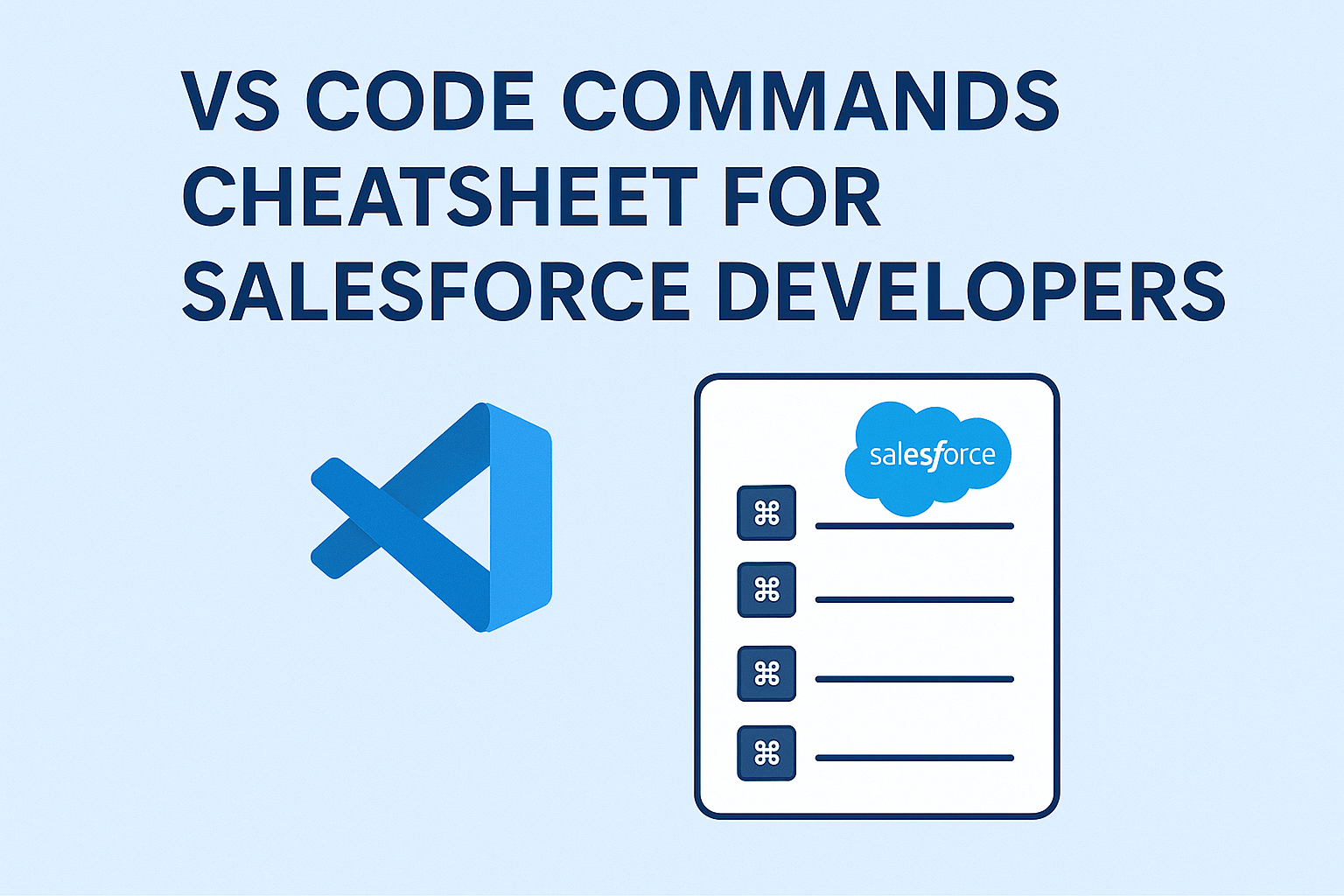Whether you’re setting up your Salesforce project, retrieving metadata, or deploying source code, having a handy VS Code command reference can save a lot of time. This cheatsheet covers essential CLI commands and useful tips for Salesforce development using Visual Studio Code.
⚙ Project Setup & Org Authentication
Start your Salesforce journey by setting up the project and authenticating with your org using the Salesforce CLI (sfdx).
sfdx force:project:create -n YourProjectName
sfdx force:auth:web:login -a OrgAlias
📤 Source Deployment & Retrieval
Push or pull source to/from your Salesforce org:
sfdx force:source:push
sfdx force:source:pull
sfdx force:source:deploy -p path/to/component
sfdx force:source:retrieve -p path/to/component
🧪 Testing & Debugging
Run Apex tests and debug issues:
sfdx force:apex:test:run --resultformat human
sfdx force:apex:log:get --number 1
sfdx force:data:soql:query -q "SELECT Name FROM Account"
🧬 Data Commands
Handle data in your org with ease:
sfdx force:data:tree:export -q "SELECT Name FROM Account" -d ./data
sfdx force:data:tree:import -p ./data/Account-plan.json
🧠 Useful VS Code Shortcuts
Ctrl + Shift + P: Open Command PaletteCtrl + P: Quick file navigationCtrl + /: Comment/uncomment codeCtrl + B: Toggle sidebar
📚 Bonus Tips
- Install the Salesforce Extension Pack in VS Code.
- Use the command below to create an LWC component:
sfdx force:lightning:component:create -n myComponent -d force-app/main/default/lwc - Create an Apex class with:
sfdx force:apex:class:create -n MyClass -d force-app/main/default/classes
